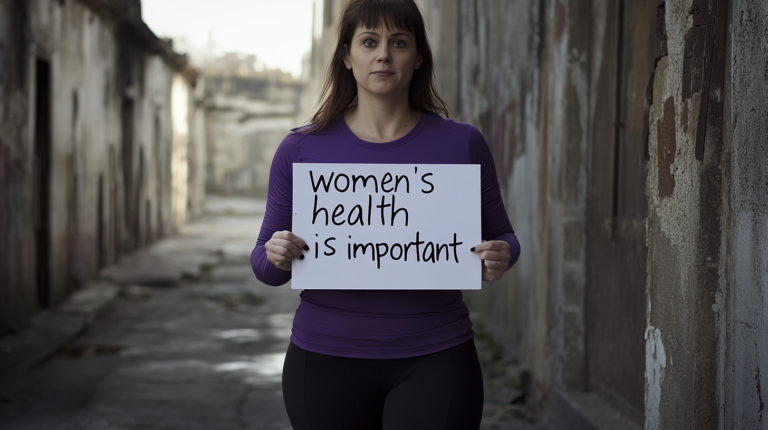Vaginal Disorders
Vaginal health is an important part of a woman’s overall well-being, but sometimes, women may experience symptoms like discomfort, itching, dryness, or abnormal discharge without any signs of infection or inflammation. These are often the result of noninflammatory vaginal disorders, which are conditions that affect the vaginal area but are not caused by an immune response or infection. While these disorders are generally not life-threatening, they can impact a woman’s comfort, sexual health, and quality of life. Understanding these conditions can help you manage symptoms effectively and seek the right treatment.
Noninflammatory vaginal disorders are conditions that affect the structure or function of the vaginal tissues without causing inflammation or infection. These disorders may lead to symptoms such as vaginal dryness, itching, discomfort during intercourse, and changes in vaginal discharge. They can result from hormonal imbalances, anatomical changes, or other factors unrelated to infection or inflammation.
Common Types of Uterine Disorders
Vaginal Atrophy (Atrophic Vaginitis): Vaginal atrophy, also known as atrophic vaginitis, occurs when the tissues of the vagina become thinner, drier, and less elastic. This condition is most common after menopause due to decreased levels of estrogen, the hormone that helps maintain the health and moisture of the vaginal lining. Women with vaginal atrophy may experience dryness, itching, irritation, discomfort during sex (dyspareunia), and an increased risk of urinary tract infections (UTIs).
Genitourinary Syndrome of Menopause (GSM): GSM is a term used to describe a group of symptoms related to vaginal and urinary changes during menopause. This includes vaginal dryness, irritation, pain during intercourse, and urinary symptoms like urgency or frequent urination. GSM is largely caused by hormonal changes that decrease estrogen levels, leading to the thinning and dryness of vaginal tissues and affecting the pelvic floor muscles.
Vulvodynia: Vulvodynia is a chronic pain condition that affects the vulva, the external part of the female genitalia. Women with vulvodynia may experience burning, stinging, or itching sensations in the vaginal area without any visible signs of infection or inflammation. The cause is often unknown, but it may be related to nerve irritation or pelvic floor muscle dysfunction.
Lichen Sclerosus: Lichen sclerosus is a chronic skin condition that typically affects the genital area, causing thinning and whitening of the skin around the vulva and vagina. While it is not an infection or inflammation, it can lead to discomfort, itching, and scarring. The exact cause is unknown, but it may be linked to autoimmune factors or hormonal changes.
Dyspareunia (Painful Intercourse): Dyspareunia refers to persistent or recurrent pain during intercourse. Although this condition can have various causes, including hormonal imbalances or pelvic floor dysfunction, it can also be a result of noninflammatory vaginal disorders like vaginal atrophy or vulvodynia. Painful intercourse can affect a woman’s physical and emotional health, so it’s important to address this symptom early.

Symptoms
The symptoms of noninflammatory vaginal disorders can vary, but common signs to look out for include:
- Vaginal dryness or irritation
- Painful intercourse (dyspareunia)
- Vaginal itching or burning
- Abnormal vaginal discharge or odor (not caused by an infection)
- Changes in urinary symptoms, such as increased frequency or urgency
- Sensitivity or discomfort in the genital area
If you experience any of these symptoms, it’s important to see a healthcare provider for an evaluation. These conditions are often manageable, and early diagnosis can help prevent worsening symptoms and improve quality of life.
Diagnosis & Treatment
To diagnose a noninflammatory vaginal disorder, your healthcare provider will likely begin by asking about your symptoms and medical history. A physical examination may include an assessment of the vulva and vagina, and in some cases, further tests like a pelvic ultrasound or skin biopsy may be necessary.
Treatment for noninflammatory vaginal disorders will depend on the underlying cause and the severity of your symptoms. Common treatment options include:
Hormonal Therapy: For conditions like vaginal atrophy and genitourinary syndrome of menopause, estrogen therapy (in the form of creams, rings, or oral medications) can help restore moisture, elasticity, and comfort to vaginal tissues.
Topical Treatments: Over-the-counter or prescription lubricants and moisturizers can alleviate vaginal dryness and discomfort during intercourse. These treatments help hydrate the vaginal tissues and reduce irritation.
Pelvic Floor Physical Therapy: For conditions like vulvodynia and dyspareunia, pelvic floor physical therapy may help address muscle tightness, nerve irritation, or pelvic floor dysfunction. This therapy can improve blood flow and reduce pain during intercourse.
Pain Management: Medications such as topical anesthetics, pain relievers, or nerve-blocking medications may be recommended for conditions like vulvodynia. Your doctor may also suggest desensitization techniques to help manage pain.
Avoiding Irritants: For conditions like lichen sclerosus, avoiding irritants such as harsh soaps, scented products, and tight clothing can help reduce discomfort. Steroid creams are often prescribed to reduce symptoms and prevent skin changes.
Conclusion
Noninflammatory vaginal disorders can cause a range of symptoms that affect a woman’s comfort, sexual health, and emotional well-being. While these conditions are generally not related to infection or inflammation, they can still have a significant impact on daily life. If you experience any unusual symptoms such as vaginal dryness, pain during intercourse, or genital irritation, it’s important to consult with your healthcare provider. With proper diagnosis and treatment, most women with noninflammatory vaginal disorders can find relief and improve their quality of life.
